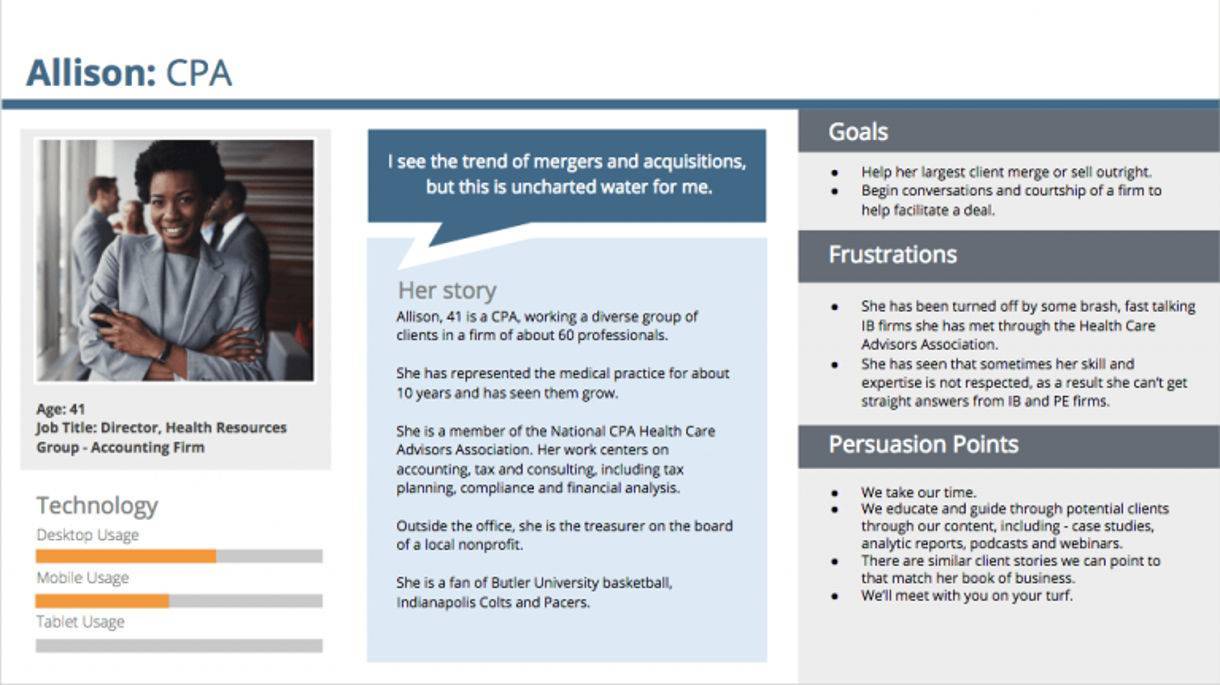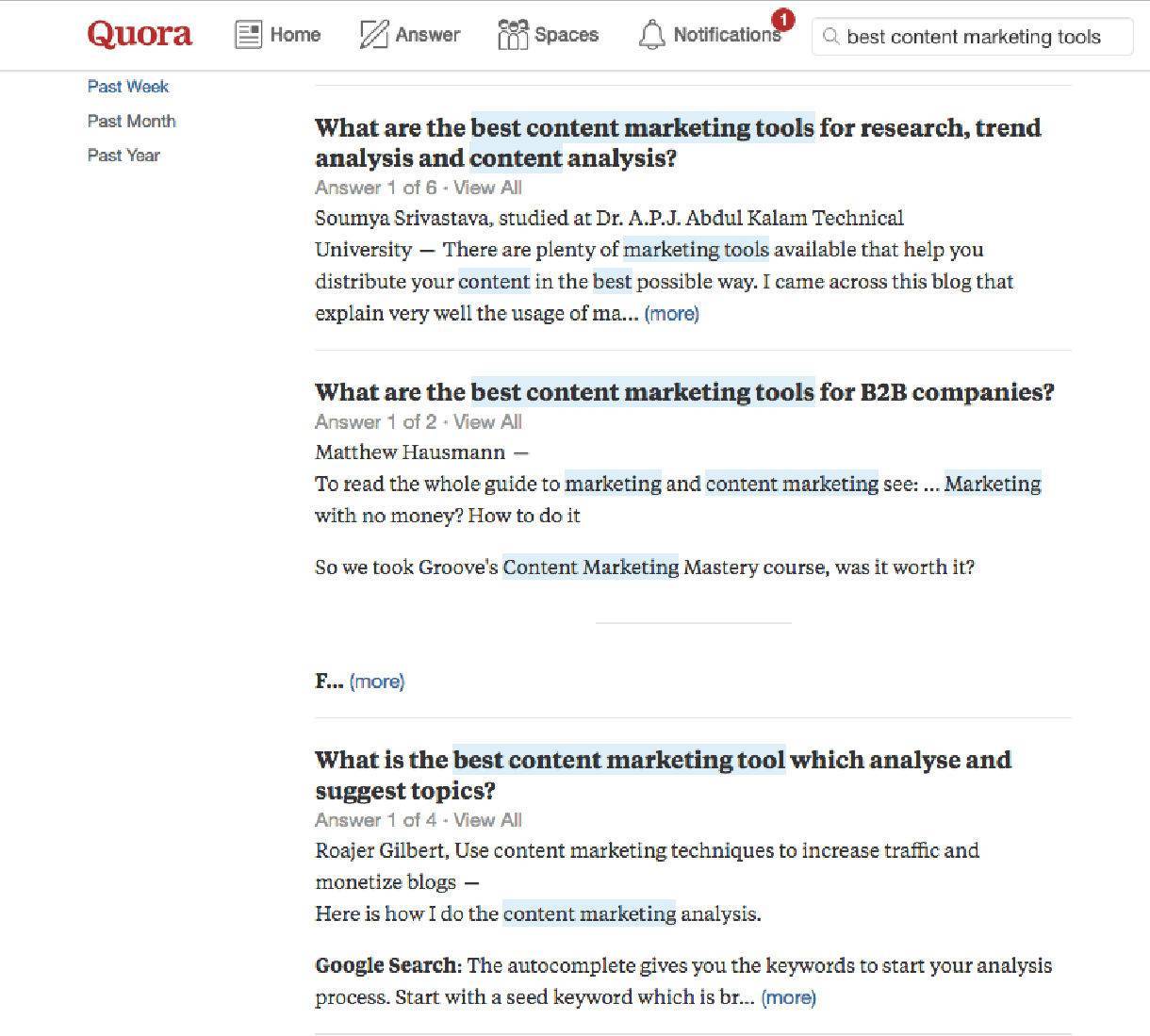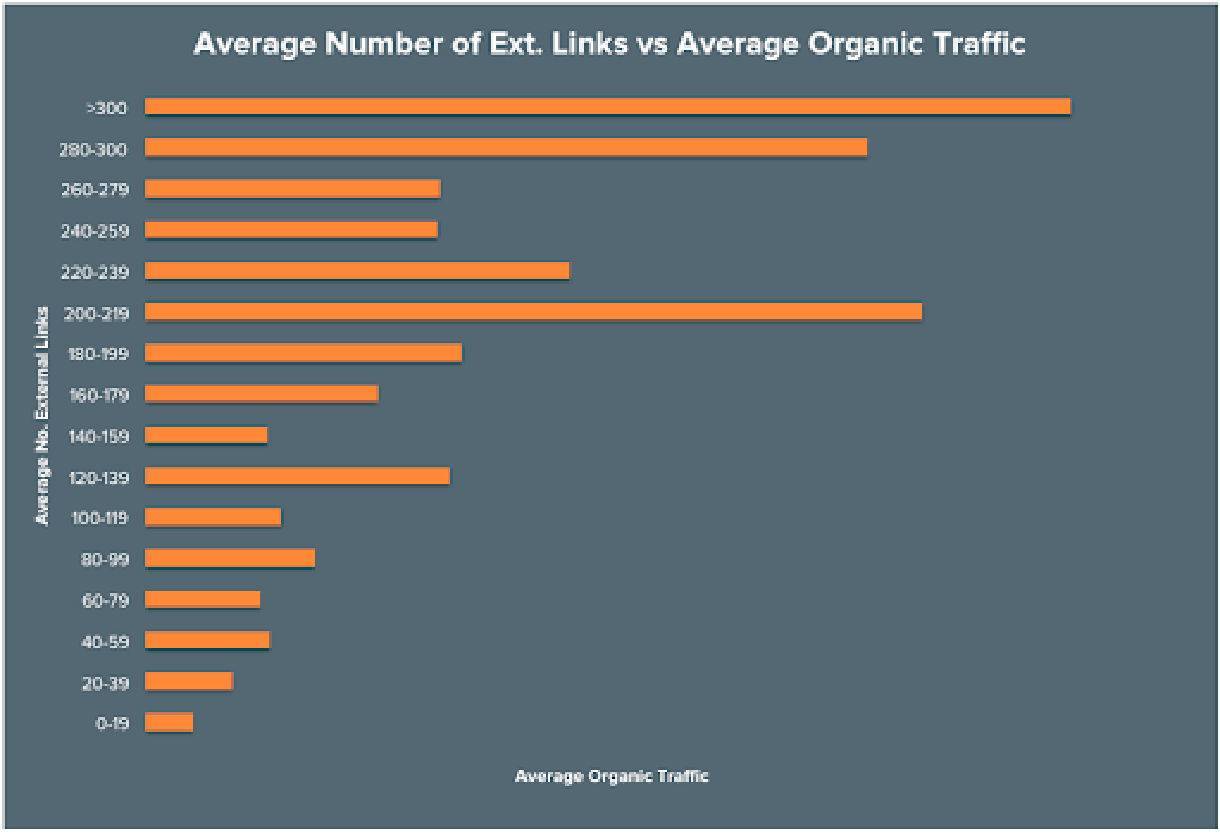

8 Ways B2B Companies Generate Leads Through Organic Search
Businesses are constantly looking for ways to attract more visitors to their websites through organic search, where they can convert and become sales leads. While more web traffic is generally a good thing, more of the right traffic is better for B2B websites to generate leads.
For website owners, the beauty of organic traffic is you’re getting attention from web users who are willingly and actively seeking your content. They've submitted keywords in search queries that bring up matching web content, displayed in ranked order in search engine results pages (SERPs), and leveraging the right SEO tactics can get your website listed more prominently among competitive results.
That's why knowing what your audience is searching for and interested in is invaluable when producing and optimizing B2B content that will earn more clicks to your website from online search. B2B companies can use this content to drive high-quality search traffic and potential leads to their websites organically using a combination of technical SEO and content marketing strategies.
We’ve outlined eight best practices that will help any B2B marketer get started with implementing a lead generation strategy that gets results:
Table of Contents
1. Create Target Personas
I know what you’re thinking. What do audience personas have to do with organic traffic? The answer is everything. Personas should be the foundation of your marketing strategy. If you don’t know who your target audience is, how can you market to them?
Part of B2B companies understanding their audience is knowing what types of things they’re searching for online. What questions are they asking? What products and services will help their businesses grow? What content topics and formats are they looking for?
Luckily, there are effective ways B2B companies can find answers to these questions:
Participate in a Persona Workshop
The first way B2B companies can identify their target audience is to participate in a persona workshop, which helps determine demographics of your primary target audience, what their goals are, what frustrates them, and what matters the most to them. It’s highly recommended to elicit the help of a professional marketing agency that not only has personification expertise but also brings a fresh, outside perspective.
 An example of what a finished user persona could look like.
An example of what a finished user persona could look like.
Use Platforms like Quora for Persona Insights
Another way to learn about your target audience is to browse a tool like Quora, a social media platform where users ask experts to answer a wide variety of questions. You can search keywords, then see questions and answers from users related to your keyword search. While not every question will be relevant to your brand or goals, many can still help you understand the mindset of your personas and what matters to them.

Searching for keywords related to your core capabilities can reveal audience insights
In the example above, I searched for the phrase “best content marketing tools.” For a B2B company that provides content marketing software to other companies, it’s valuable to know some of the questions users are asking, what the responses are, and if your company is being talked about positively or negatively. By knowing what your users are searching for, you can create content that will be incredibly valuable to them.
2. Perform Comprehensive Keyword Research
Once you know the type of information your audience is searching for, you can then start to determine relevant categories/topics and conduct research to figure out the exact keywords you want to target. Keywords directly related to your products, services, and industry are obviously relevant to your audience, but figuring out long tail keywords may be more valuable to your business and SEO strategy.
Long Tail Keywords
Long tail keywords–or keywords that are lengthier and more specific–can be a better match for B2B customers who are closer to making a purchase, or those who know exactly what information they’re seeking online. Long tail keywords generally have a lower search volume than more standard keywords–but less volume often translates to higher quality when it comes to search keywords that convey an evident intent to do business.
Let’s say you own a wholesale clothing company, and want to move a new shipment of seasonal jackets to an online retail clothing company. What you name the jacket, how you describe it on the product page, and what you include in the meta title and description can make a world of difference.
For example, consider the difference between “bomber jacket" and “wholesale bomber jacket”:

As you see here, "bomber jacket" has a search volume of 70K-118K

Here you see "wholesale bomber jacket" only has 51-100 searches—much less competitive
While “bomber jacket”definitely has more search volume, it’s less specific and doesn’t imply whether it’s coming from a wholesaler. “Wholesale bomber jacket,” however, is much more specific, relevant, and less competitive (in terms of monthly search volume). Targeting this long tail keyword makes sense because it more closely matches not only the product you are selling, but also the prospective customer’s search intent and needs.
Related Read: PPC Advertising: How B2B Companies can Increase Lead Generation
3. Produce Quality, Research-Driven Content
Identifying who your users are, and the types of keywords they’re searching for, allows you to begin creating content that caters directly to them. Users interact more with content they find informative, educational, and engaging.
Keyword-rich content elevates your overall SERP rankings and better positions you to be discovered by your target audience. Publishing content like blog posts, whitepapers, infographics, landing pages, and more helps drive traffic to your website, which potentially generates more leads.
Publish Quality vs. Quantity
When it comes to content, high quality is far superior to large quantities of mediocrity. Put another way: Optimized content will outperform an abundance of poor content. For content to be effective and better-positioned for successful conversion and SEO performance, it needs to:
- Include internal links to other pages on site
- Be keyword rich
- Utilize a proper heading structure (H1s followed by H2s, H2s followed by H3s, etc.)
- Have an eye-catching title
- Contain well-placed CTAs
- Be approximately 1,000 words or more
4. Build Internal and External Links
Once B2B companies start creating and publishing valuable pieces of content, a solid link-building strategy ensures that more people will find it through organic search. As the most important factor in ranking for competitive keywords, quality links are crucial for making sure your target audience can find your content.
External Link Building
Despite what many believe, links from your website to another don’t impact search rankings. What matters most in link building is picking up backlinks, which happen when other websites link to your website from their own.

The graph shows the correlation between backlinks and increased organic traffic. Source: Matthew Barby
While link building might sound simple enough, it can be quite challenging. The most important things to focus on are creating relevant content that provides value to the user, and identifying which websites would want to link back to this content.
Just like with content creation, backlinking is all about quality over quantity. Determining who your ideal backlinks are is a critical step in a link building strategy. Generally, quality links will come from industry-related publications, popular bloggers, media outlets, and so on. The higher your content quality, the more these publications will feel compelled to link back to it.
Internal Link Building
Link building should also take place internally. Internal link building is one of the easiest ways to improve your website's technical SEO, both architecturally and also from a user experience standpoint, because it strategically offers visitors new pathways to navigate through your website's content based on what they are most interested in.
However, be strategic about your distribution of internal links. Including too many links throughout your content can annoy or confuse your audience with too many choices. Try to place links at least a few sentences apart, so as not to overwhelm your readers and paralyze them with the paradox of choice.
5. Optimize Landing Pages
For B2B businesses, the importance of a good landing page is invaluable. Landing pages are essentially the gateway to a sales lead, so making sure they’re best optimized to convert is key. Below, we’ve compiled some tips on how to properly optimize a landing page:
Write Eye-Catching Headlines
Headlines are the first thing a prospective client will see. The headline needs to not only grab the reader’s attention, but it should also be clear as to what the value proposition of what you’re selling is.
Focus Your Copy on Benefits
The body copy on a landing page is your opportunity to promote the benefits of what you’re selling. It’s important that you don’t waste valuable space on the page with copy that doesn’t provide the user with value on your products or services.
A-B Test Your Headlines, Copy, CTAs, and Buttons
The best way to determine what’s working on your landing page and what’s not is to conduct A/B tests, which consists of altering a variable on a page and testing the altered version against the original. Remember not to change multiple variables because you won’t know which changes lead to the differences in analytics. Variables to consider changing are headlines, body copy, button copy, and images.
Keep Your Forms Brief
Once a user clicks your call-to-action (CTA) button from your landing page, the last thing you want to do is overwhelm them with a lengthy form to fill out. Make sure that the information you’re requesting from the user is brief and necessary. If a contact us form is too long, the user may get frustrated and exit the page entirely.
Related Read: How to Write Email Subject Lines That Increase Open Rates
6. Use Social Media
Some of the most effective organic lead generation strategies involve social media marketing. Though social media may initially seem ill-suited to B2B marketing that targets a business-oriented audience, the reality is social audiences on networks like LinkedIn, Facebook, and Twitter are made up of B2B prospects.
So while your social posts themselves don’t have a massive effect on your website’s ranking in search results, they do help keep your brand top of mind and also drive more traffic to your site. You can earn new followers or engage current subscribers with unique and on-brand posts that promote your business.
It's not just clickthroughs from social networks, either–regularly updating your social/online media with current events in the industry can occasionally help generate leads directly from organic search results:
Social Media Posts That Show Up in SERPs
To start using social media for organic lead generation, you must first decide on your platform and subsequent digital strategies. Then you must consider how your social media posts might show up in organic search, and how to leverage that additional brand presence. Let’s consider an example of how that might look:
Type “Salesforce” in Google and you will see*, based on both the websites listed and the social media featured, that Salesforce is a prominent B2B organization with a SERP that includes the following:
- The 1st organic search result is the official company website
- 2nd is "People also ask" (note: this snippet can often be mined for FAQ ideas)
- The 3rd Result is Twitter
- 4th result is Wikipedia
- 5th is YouTube
- 6th search result is LinkedIn
- The 7th Result is Facebook
*your SERP may differ slightly, but will likely have at least some of the same elements above
Popular Social Networks for B2B
As demonstrated in the earlier examples, many social networks are being used by B2B companies to drive brand awareness and generate leads through organic search, including:
- LinkedIn - By far the dominant social network among business professionals, LinkedIn specifically helps B2B companies establish credibility, promote thought leadership, and actively participate in industry groups and communities.
- YouTube - Google’s vast and popular network of published video content is easily searchable and supports organic lead generation when videos show up in SERPs and also by funneling YouTube audiences to your website from your video posts.
- Twitter - The real power of Twitter is in its relevance to real-time news and events, making it particularly useful for B2B companies seeking to attract organic traffic “in the moment” at conferences or trade shows.
- Facebook - While Facebook’s userbase has plateaued in recent years, and its content is typically more lifestyle-oriented than business-related, its presence as a social media monolith cannot be ignored, even by B2B brands.
- Quora - As mentioned above, Quora provides both a source of organic traffic and a valuable research tool for developing buyer personas.
Once you have determined which social platforms to include in your B2B marketing mix, it’s time to plan and post content that drives your social media followers to visit your site.
As you add more content to your website or blog, you’ll have more opportunities to obtain leads organically by posting links to that content on your social media accounts and inviting people to check it out. This is part of forming a more holistic and integrated marketing strategy that elevates all of your lead generation efforts.
7. Improve Page Speed
When users search, they want to access the result (like your website) fast. If your site loads too slowly, you risk those leads leaving your page and visiting a competitor instead. Fifty-three percent of users will abandon a page if it takes more than three seconds to load. You don’t want to give away leads due to a slow-loading page.
If those risks don't scare you enough, consider Google’s next algorithm update, known as the “page experience” update, makes technical optimization of your site even more critical for organic search performance. Google is constantly updating its benchmark criteria for your site's page performance. You have to maintain it, especially as you add new content.
To ensure your pages load quickly, you can use Google's free Lighthouse or PageSpeed Insights tools to see how fast your page currently loads. Google will offer suggestions for how you or your developers can boost your page speed.
8. Make Website Navigation Simple
The last thing your audience wants to do is struggle to find information on your page.
If your navigation is too difficult to use, you risk losing leads as traffic bounces from your site. Your navigation needs broad headings that encompass numerous topics below them, allowing users to drill down to the pages they are most interested in.
Many companies have generic headings like About, Services, or Products. These broad headings allow you to organize your information into categories below the heading, but you may also consider narrowing these to specific terms if they help visitors.
For example, if you are a chemicals manufacturer, instead of Products you may use a term such as Chemicals or Solvents in your navigation to help users that are interested in those specific products click straight to the most relevant page. When someone hovers over that tab, they would see a list of your different products in that category. It’s a great way to help guide your audience directly towards what they need.
Clear and concise navigation drives better organic traffic engagement for your website because people find your information and remain on your pages longer. This improves user engagement metrics on your site that are linked with Google's search ranking signals, such as bounce rate.
Remember: B2B Lead Generation Takes Time
B2B companies should understand that lead generation won’t change overnight; it’s a process. By following all of the above steps, B2B companies are better positioning their content to drive more organic traffic to their website that has a high potential of turning into valuable sales leads and loyal customers.
It’s important to note that all of the steps listed above must be addressed in your organic search strategy, because they all depend on each other. There are several more ways to increase lead generation for B2B companies, but this blog post should get you off to a good start!
If you’re interested in learning more about generating more leads through organic search for your B2B company, reach out to our expert team.




